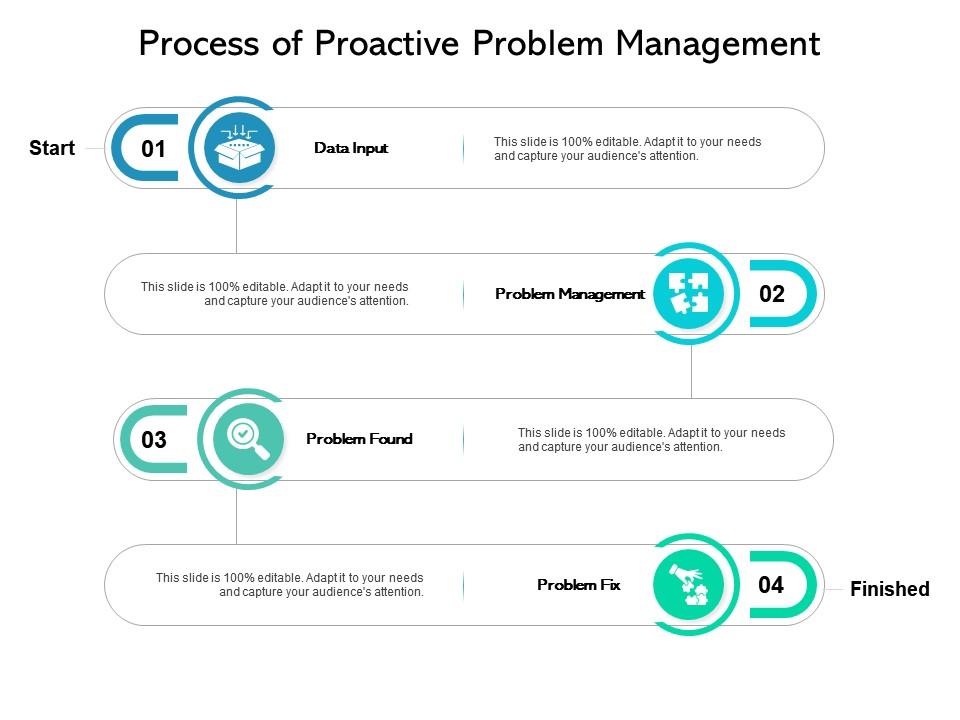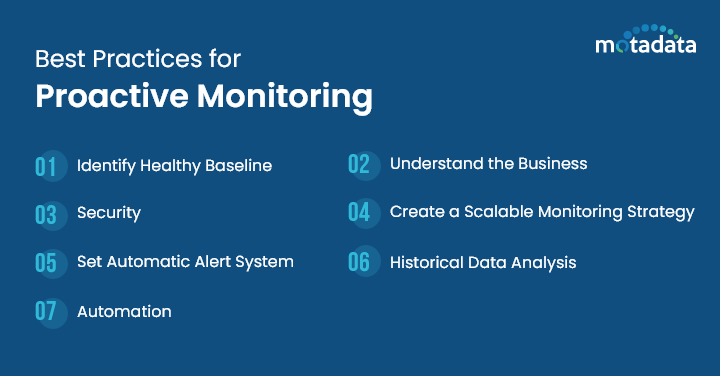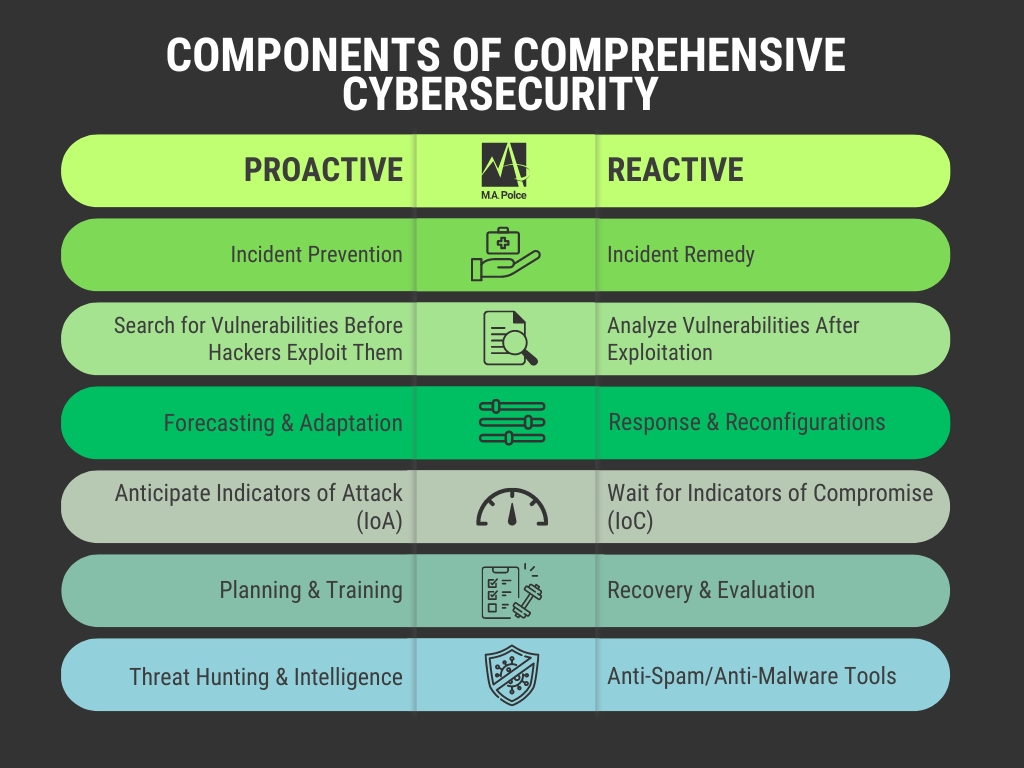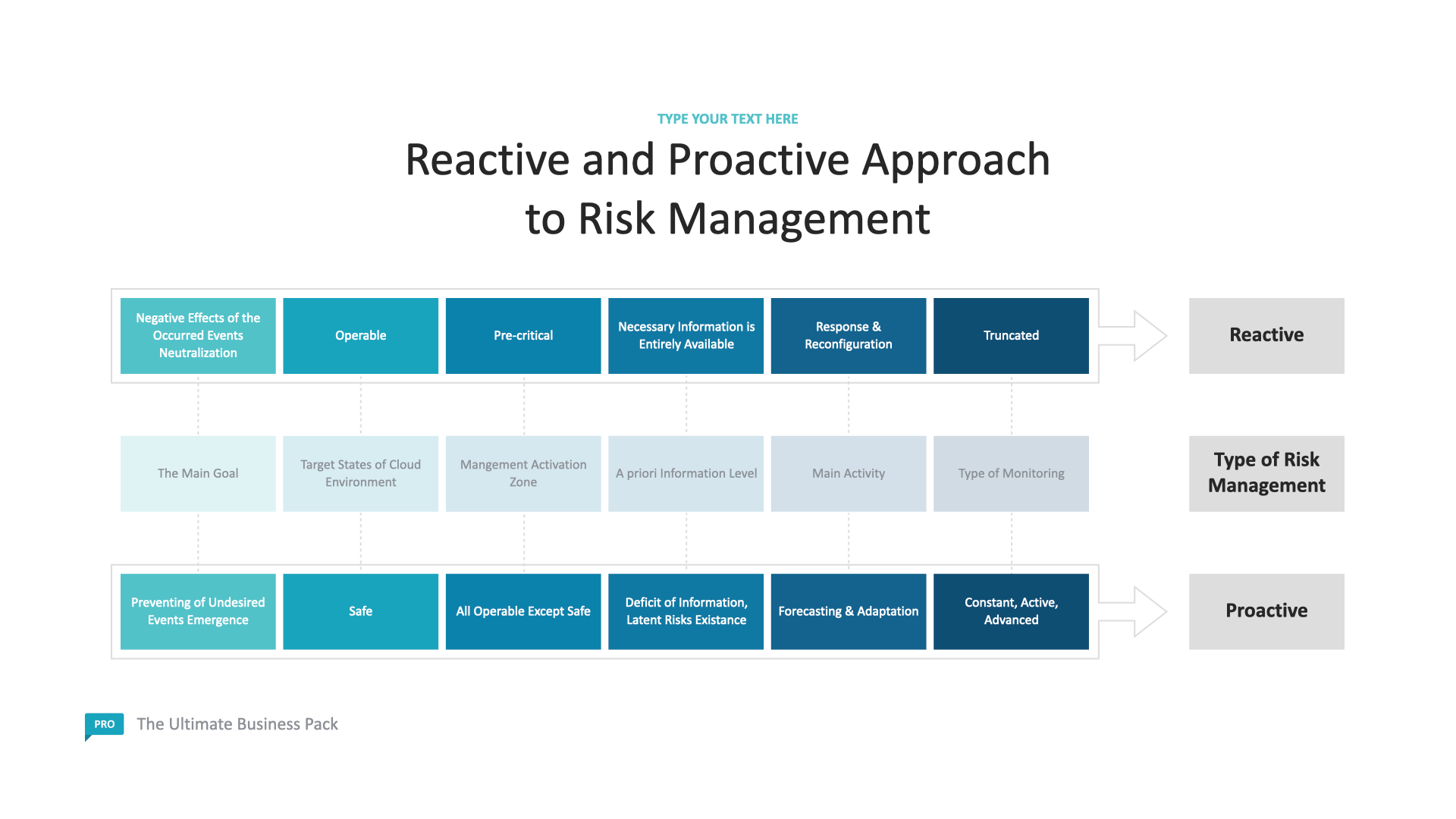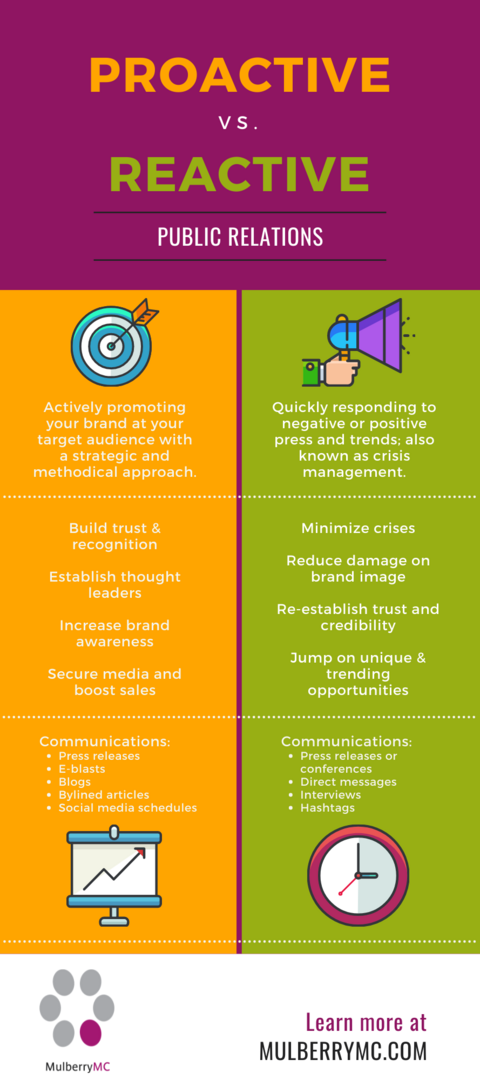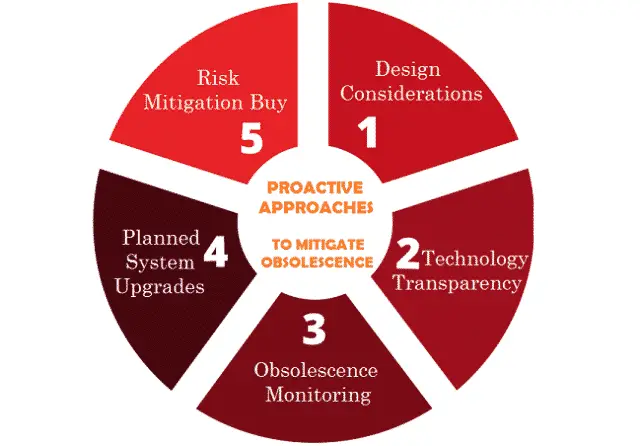What Is One Component Of Proactive Procedures

Imagine a team, not just reacting to fires, but actively preventing them. Picture a workplace where potential problems are spotted and addressed before they escalate into costly crises. This isn't a fantasy; it's the power of proactive procedures, a world where foresight and preparedness reign supreme.
At the heart of these proactive strategies lies a critical component: Risk Assessment. This isn't just about identifying potential pitfalls; it's about meticulously evaluating their likelihood and impact, then crafting strategies to minimize or eliminate them, ensuring a smoother and more secure path forward.
Risk assessment, in essence, is a structured approach to identifying potential hazards and systematically evaluating the risks associated with them. It forms the bedrock of proactive measures across various sectors, from workplace safety to financial management and even personal well-being.
The significance of Risk Assessment in proactive procedures stems from its ability to transform organizations from reactive entities into proactive ones. Instead of constantly battling the consequences of unforeseen events, businesses can anticipate challenges and implement preventive measures.
The Origins and Evolution of Risk Assessment
The concept of risk assessment isn't new; it has evolved alongside human endeavors. Early forms of risk assessment can be traced back to ancient civilizations, where individuals instinctively evaluated potential dangers before embarking on journeys or engaging in activities.
However, the formalization of risk assessment as a distinct discipline gained traction in the mid-20th century, particularly in industries such as engineering and nuclear power. The need to manage complex systems and prevent catastrophic failures spurred the development of systematic risk assessment methodologies.
Over time, Risk Assessment expanded beyond its initial domains. It’s becoming integral to sectors like healthcare, finance, and environmental management. The increasing complexity of modern systems and the interconnectedness of global events have further amplified its importance.
The Core Elements of a Robust Risk Assessment
A comprehensive risk assessment typically involves a series of interconnected steps, each contributing to a holistic understanding of potential threats and vulnerabilities.
1. Hazard Identification
The initial stage involves identifying potential hazards that could negatively impact the organization or its stakeholders. This might involve examining processes, equipment, environmental factors, and human behaviors.
Methods for hazard identification include workplace inspections, hazard reports, review of past incidents, and brainstorming sessions involving diverse team members.
2. Risk Analysis
Once hazards have been identified, the next step is to analyze the associated risks. This involves assessing the likelihood of a hazard occurring and the severity of its potential consequences.
Risk analysis often employs qualitative and quantitative techniques, such as probability assessments, impact matrices, and fault tree analysis, to gain a comprehensive understanding of the risks involved.
3. Risk Evaluation
After analyzing the risks, they must be evaluated to determine their significance and prioritize mitigation efforts. This involves comparing the assessed risks against established risk criteria and determining whether they are acceptable, tolerable, or unacceptable.
Risk evaluation helps organizations focus their resources on addressing the most critical risks and allocating resources effectively.
4. Risk Control
The final stage involves implementing measures to control or mitigate the identified risks. This might include eliminating the hazard altogether, reducing its likelihood or severity, or transferring the risk to another party through insurance or contracts.
Control measures can range from engineering controls, such as installing safety guards, to administrative controls, such as implementing safety procedures, and personal protective equipment (PPE), such as providing respirators.
5. Monitoring and Review
Risk assessment is not a one-time event; it's an ongoing process that requires regular monitoring and review. The effectiveness of control measures must be evaluated, and the risk assessment process must be updated as new hazards emerge or existing risks change.
Regular audits, inspections, and incident investigations can help identify areas for improvement and ensure that the risk assessment process remains relevant and effective.
Benefits of Implementing Effective Risk Assessment
The benefits of implementing effective risk assessment extend far beyond simply preventing accidents and incidents. They encompass improved efficiency, enhanced productivity, and a stronger organizational culture.
By proactively identifying and addressing potential problems, organizations can avoid costly disruptions, minimize downtime, and optimize their operations.
Risk Assessment fosters a culture of safety and awareness, where employees are empowered to identify and report potential hazards. This promotes a sense of shared responsibility and accountability, leading to improved morale and engagement.
Strong risk management practices enhance an organization's reputation and build trust with stakeholders, including customers, investors, and regulators. Demonstrating a commitment to safety and responsible operations can provide a competitive advantage and attract top talent.
Challenges in Implementing Risk Assessment
Despite its numerous benefits, implementing effective risk assessment can be challenging, particularly in organizations with limited resources or a lack of expertise. One common challenge is the availability of reliable data and information.
Accurate risk assessment relies on having access to relevant data, such as historical incident reports, industry benchmarks, and expert opinions. Organizations must invest in data collection and analysis to ensure that their risk assessments are based on sound evidence.
Another challenge is resistance to change. Risk Assessment can require significant changes to processes, procedures, and organizational culture. Overcoming this resistance requires strong leadership, effective communication, and employee involvement.
Maintaining focus and resources can prove difficult. Risk management needs unwavering commitment. Over time, the initial enthusiasm for risk assessment can wane, leading to complacency and a decline in the effectiveness of control measures. To prevent this, keep the process evolving.
The Future of Risk Assessment
The future of Risk Assessment is being shaped by several key trends, including the increasing use of technology, the growing emphasis on data analytics, and the integration of risk management with other business functions. Technology is playing an increasingly important role in risk assessment.
Software tools and platforms are available to automate various aspects of the risk assessment process, from hazard identification to risk analysis and control. These tools can improve efficiency, reduce errors, and provide valuable insights into risk profiles.
Data analytics is also transforming the way risk is assessed and managed. By analyzing large datasets, organizations can identify patterns and trends that might not be apparent through traditional risk assessment methods.
This enables them to make more informed decisions about risk mitigation and resource allocation. Risk Assessment is becoming increasingly integrated with other business functions, such as strategic planning, financial management, and operations.
This holistic approach ensures that risk considerations are embedded in all aspects of the organization's activities, leading to more resilient and sustainable outcomes.
Risk Assessment in Action: A Case Study
Consider a manufacturing company that implemented a comprehensive risk assessment program to improve workplace safety. The company began by conducting a thorough hazard identification exercise.
It reviewed incident reports, conducted workplace inspections, and solicited feedback from employees. As a result, numerous potential hazards were identified, including unguarded machinery, slippery floors, and improper handling of hazardous materials.
The company then analyzed the risks associated with each hazard, assessing the likelihood and severity of potential injuries. Risks were evaluated and prioritized to address the most critical ones first.
The company invested in new safety equipment, implemented stricter safety procedures, and provided comprehensive safety training to all employees. Regular audits and inspections were conducted to monitor the effectiveness of the control measures.
Within a year, the company experienced a significant reduction in workplace injuries and illnesses. The improved safety culture also led to increased employee morale, reduced absenteeism, and enhanced productivity. The risk assessment program had transformed the company into a safer and more efficient workplace.
In the intricate dance of organizational life, proactive procedures, with Risk Assessment as a key player, illuminate the path forward. They remind us that foresight isn't just about avoiding problems; it's about building a more resilient, efficient, and ultimately, a more successful future.

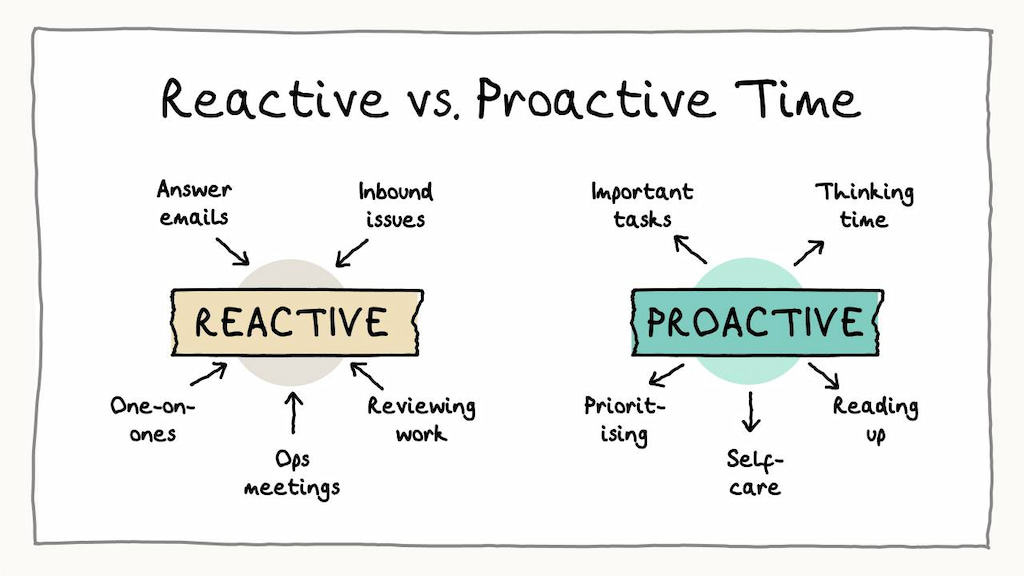
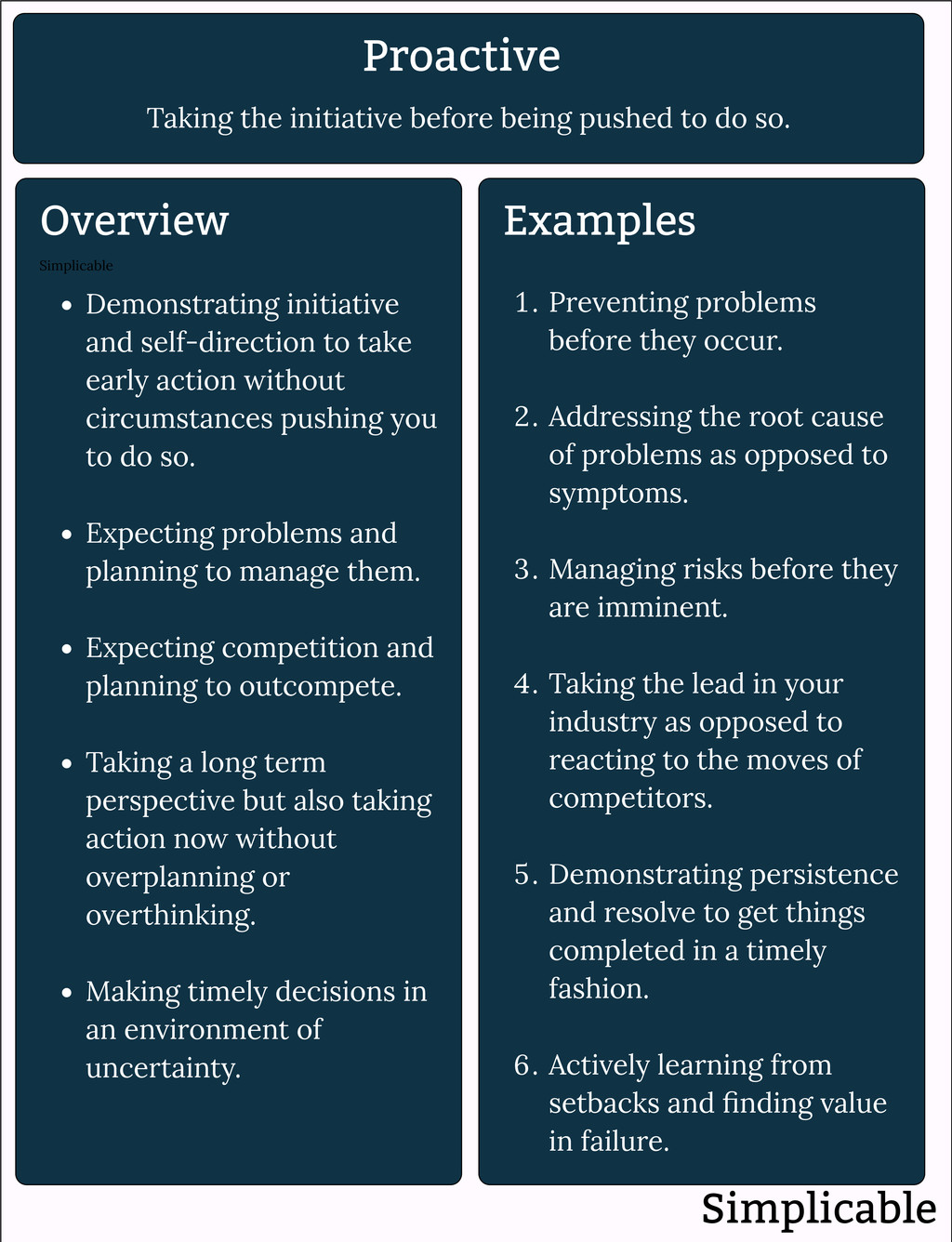
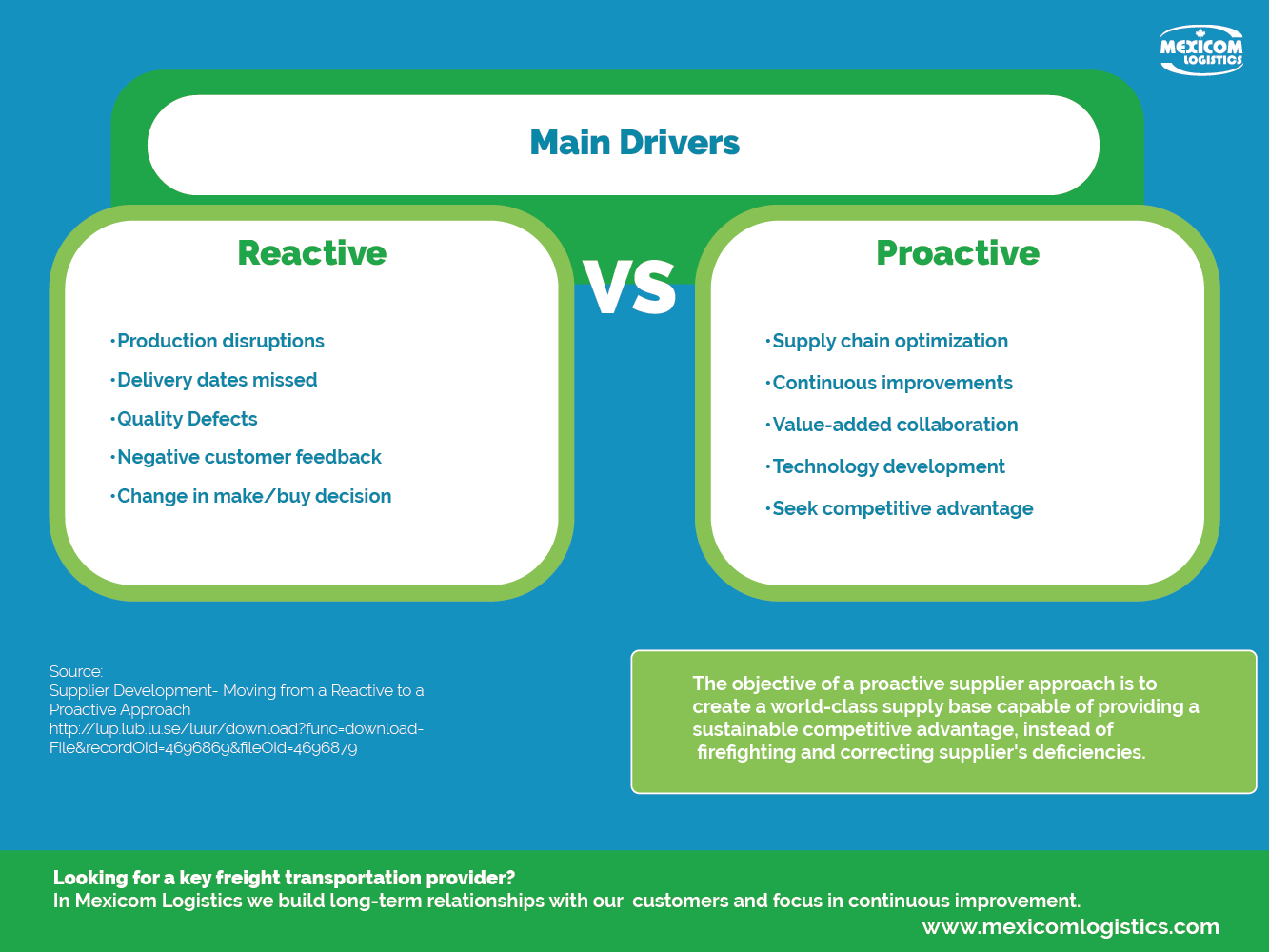
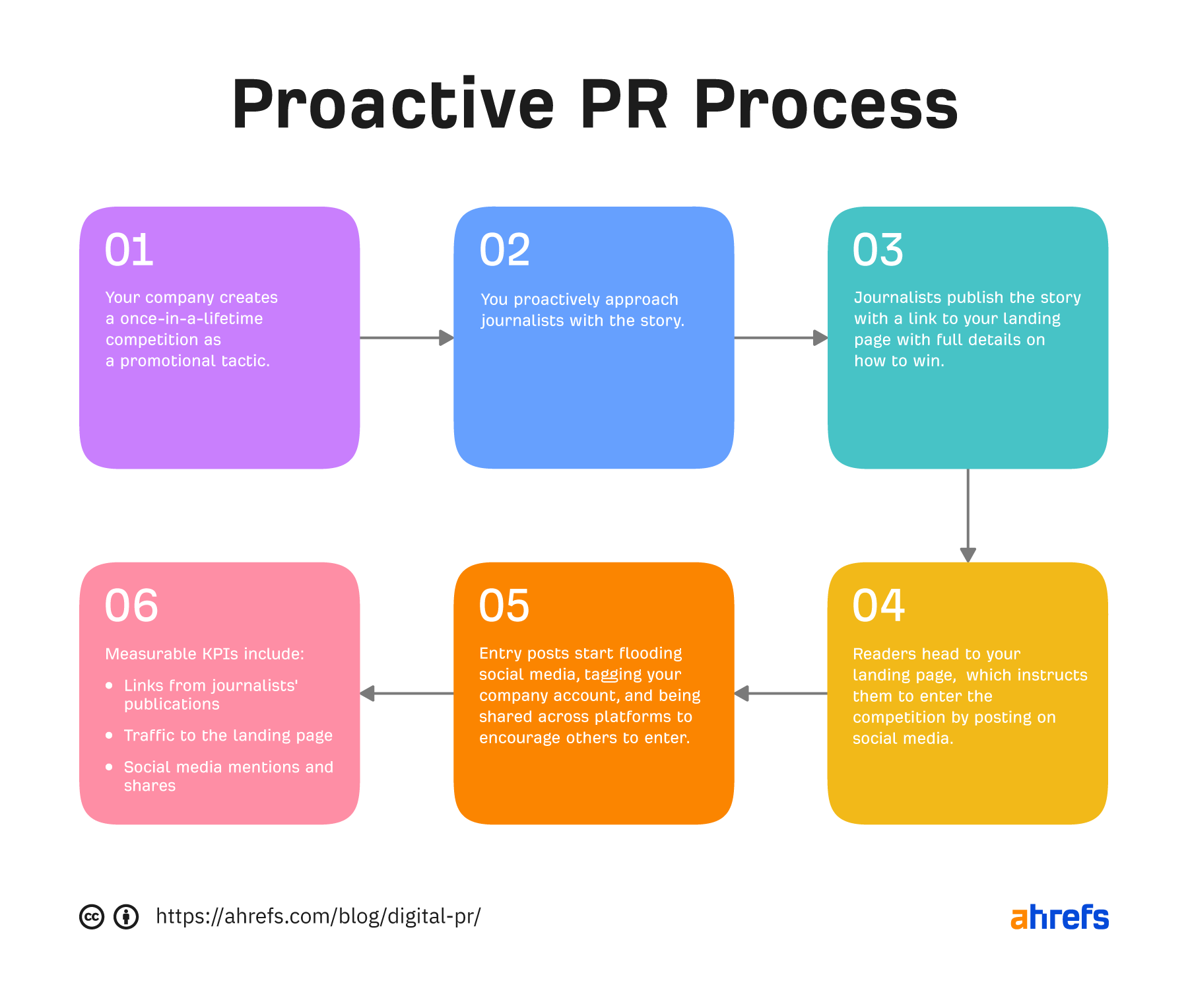

![What Is One Component Of Proactive Procedures Proactive Customer Service: What is It and How to Do It [+ Examples]](https://blog-static.userpilot.com/blog/wp-content/uploads/2023/08/proactive-customer-service-what-is-it-and-how-to-do-it_142fa0a43ff1ef31e362b6c5196d7995_2000.png)
